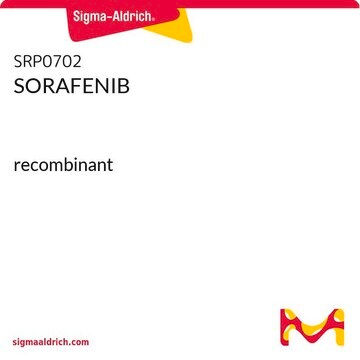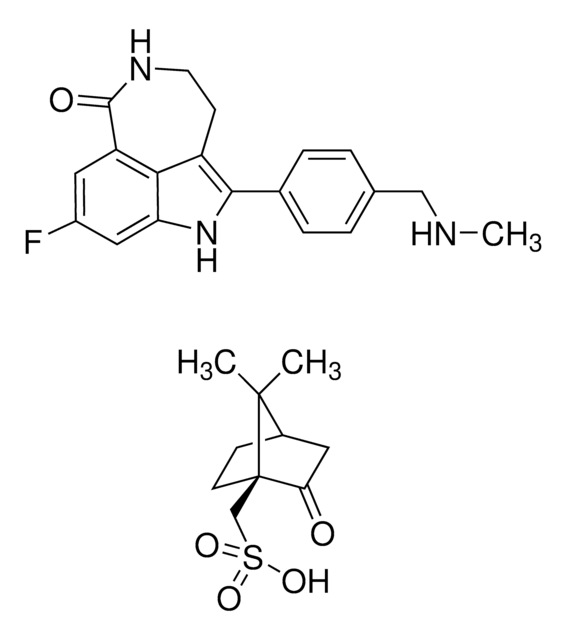E7781
Erastin
≥98% (HPLC), powder, antitumor agent
Synonim(y):
2-[1-[4-[2-(4-Chlorophenoxy)acetyl]-1-piperazinyl]ethyl]-3-(2-ethoxyphenyl)-4(3H)-Quinazolinone
About This Item
Polecane produkty
product name
Erastin, ≥98% (HPLC)
Próba
≥98% (HPLC)
Postać
powder
kolor
white to beige
rozpuszczalność
DMSO: 5 mg/mL, clear (warmed)
temp. przechowywania
−20°C
ciąg SMILES
CCOc1ccccc1N2C(=O)c3ccccc3N=C2C(C)N4CCN(CC4)C(=O)COc5ccc(Cl)cc5
InChI
1S/C30H31ClN4O4/c1-3-38-27-11-7-6-10-26(27)35-29(32-25-9-5-4-8-24(25)30(35)37)21(2)33-16-18-34(19-17-33)28(36)20-39-23-14-12-22(31)13-15-23/h4-15,21H,3,16-20H2,1-2H3
Klucz InChI
BKQFRNYHFIQEKN-UHFFFAOYSA-N
informacje o genach
human ... hRas(3265)
mouse ... hRas(15461)
rat ... hRas(293621)
Opis ogólny
Zastosowanie
- as a positive control for inducing ferroptosis in hepatic stellate cell (HSC)
- to induce ferroptosis and in transferrin internalization assay of human fibrosarcoma HT1080 cells
- to induce ferroptosis of muscle-derived cell lines
Działania biochem./fizjol.
Cechy i korzyści
Kod klasy składowania
11 - Combustible Solids
Klasa zagrożenia wodnego (WGK)
WGK 3
Temperatura zapłonu (°F)
Not applicable
Temperatura zapłonu (°C)
Not applicable
Środki ochrony indywidualnej
Eyeshields, Faceshields, Gloves, type P2 (EN 143) respirator cartridges
Certyfikaty analizy (CoA)
Poszukaj Certyfikaty analizy (CoA), wpisując numer partii/serii produktów. Numery serii i partii można znaleźć na etykiecie produktu po słowach „seria” lub „partia”.
Masz już ten produkt?
Dokumenty związane z niedawno zakupionymi produktami zostały zamieszczone w Bibliotece dokumentów.
Klienci oglądali również te produkty
Produkty
Cell cycle phases (G1, S, G2, M) regulate cell growth, DNA replication, and division in proliferating cells.
Apoptosis regulation involves multiple pathways and molecules for cellular homeostasis.
Nasz zespół naukowców ma doświadczenie we wszystkich obszarach badań, w tym w naukach przyrodniczych, materiałoznawstwie, syntezie chemicznej, chromatografii, analityce i wielu innych dziedzinach.
Skontaktuj się z zespołem ds. pomocy technicznej













